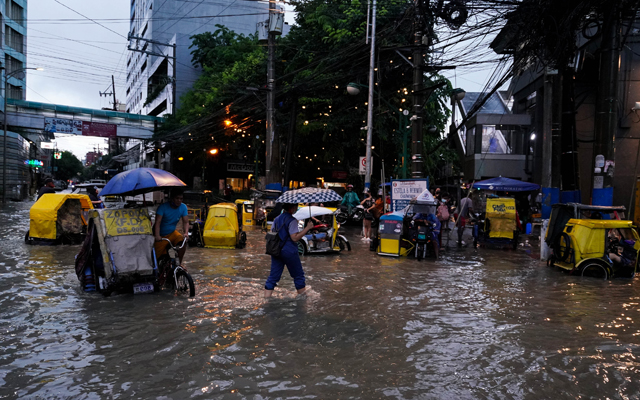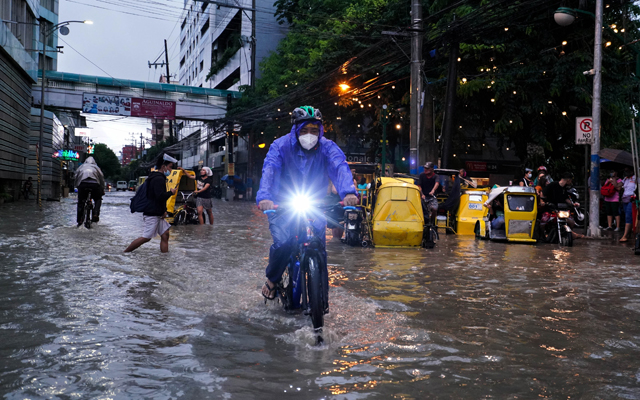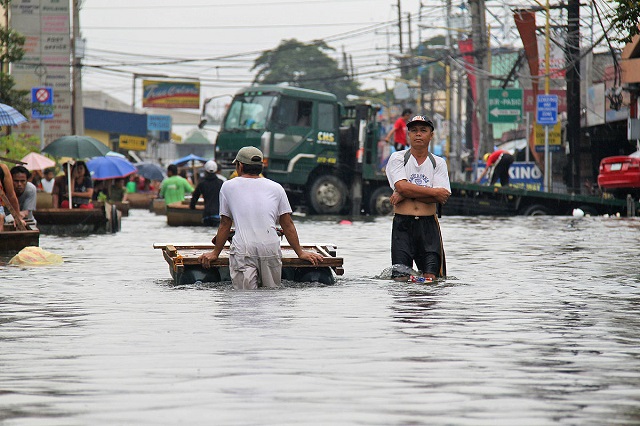
It doesn't have a name, nor a forecast track, yet when it hits, the heavy rainfall it brings can paralyze the Philippines' mega cities. It's called habagat or southwest monsoon and it is most felt in the middle of the year.
On July 21, Typhoon Fabian (In-Fa) was on its way out of the country and didn't even make landfall, yet millions woke up to a heavy downpour. That's the habagat, stirred by the exiting storm, according to the Philippine Atmospheric, Geophysical and Astronomical Services Administration.
What is habagat or the southwest monsoon in the Philippines?
Habagat is a major wind system which develops when it's summer in the northern hemisphere and winter in the southern hemisphere, said the Philippine Atmospheric, Geophysical and Astronomical Services Administration (PAGASA)'s Climate Monitoring Officer-in-Charge Annalisa Solis. Its winds blow from the southwest. When the wind patterns switch close to the Christmas months, the prevailing weather system is the amihan or northeast monsoon, which is also characterized by rainy days.
"Kapag winter po sa southern hemisphere, malamig siya so 'yong malamig na hangin, pupunta siya sa mas mainit na hangin, which is dito po sa northern hemisphere," Solis told reportr.
"Since tayo ay nasa gitna ng karagatan, 'yong hangin na 'yan na mainit na posibleng magdala ng pag-uulan dahil siya ay tatawid o dadaan sa malaking bahagi ng dagat, nagkukuha siya ng maraming moisture," she added.
Warm winds from the southwest cross the equator onto the Philippines. This happens during the summer season in the northern hemisphere, usually from June to August, hence the "summer monsoon."
It first reaches the western section of Luzon, including portions of Panay Island and Iloilo. When PAGASA records continuous rainfall over several days, they declare the onset of the rainy season. It also signals that the habagat is here.

Habagat and Typhoons
When a weather disturbance forms near the southwest winds, it will interact and enhance the monsoon. It does not have to be inside the Philippine area of responsibility to cause rainfall, just like what's happening with Typhoon Fabian.
This phenomenon occurs frequently in the Philippines. Remember August 2012, when Tropical Storm Haikui located northeast of Taiwan enhanced the southwest monsoon affecting Luzon and Visayas? Haikui didn't even have a local name because it never entered the Philippine Area of Responsibility, but the enhanced habagat caused the Marikina and Tullahan rivers to swell. After five days of rainfall, 112 were killed, according to the National Disaster Risk Reduction and Management Council. It didn't help that people were still recovering from the onslaught of Typhoon Gener (Saola) less than a week earlier.
In 2013, the habagat was enhanced by Tropical Storm Maring, bringing floods over the National Capital Region and nearby provinces. Some 32 people died due to the storm.
In 2018, three storms—Henry, Inday, and Josie—enhanced the habagat. Over 1.1 million individuals were affected by floodings. Four people were reported dead in its aftermath.
Then there's the epic floods spawned by Tropical Storm Ondoy (Ketsana) in 2009. It's not a particularly strong storm based on wind speed, but it stirred the monsoon.

Here is a guide from PAGASA on what to do during and after flooding:
During a Flood
- Avoid areas subject to sudden flooding.
- Do not attempt to cross rivers of flowing streams where water is above the knee.
- Beware of water-covered roads and bridges.
- Avoid unnecessary exposure to the elements.
- Do not go swimming or boating in swollen rivers.
- Eat only well-cooked food. Protect leftovers against contamination.
- Drink clean or preferably boiled water only.
After a Flood
- Re-enter establishments with caution using flashlights, not lanterns or torches. Flammables may be inside.
- Be alert for fire hazards like broken wires.
- Do not eat food and drink water until they have been checked for floodwater contamination.
- Report broken utility lines (electricity, water, gas, and telephone) to appropriate agencies authorities.
- Do not turn on the main switch or use appliances and other devices until these have been checked properly by an electrician.
- Consult health authorities for immunization requirements.
- Do not go to disaster areas. Your presence might hamper rescue and other emergency operations.
[ArticleReco:{"articles":["86861","86850","86853","86840"], "widget":"Hot Stories You Might Have Missed"}]
Hey, Spotters! Check us out on Viber to join our Community and subscribe to our Chatbot.
Source: Spot PH
No comments:
Post a Comment